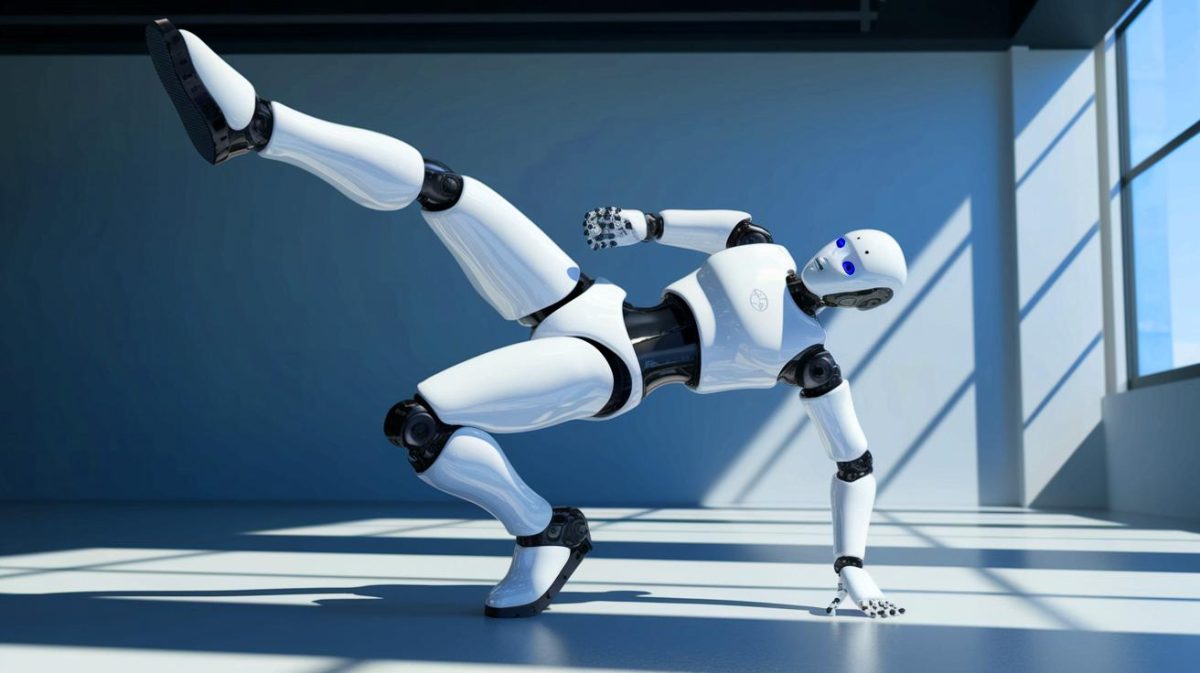| IN A NUTSHELL |
|
In the ever-evolving world of robotics, breakthroughs happen at a rapid pace, redefining what machines can achieve. One such remarkable advancement is brought to us by Unitree, a leading robotics company known for pushing the boundaries of humanoid intelligence. Their latest achievement showcases the G1 humanoid robot executing the world’s first kick-up, a feat that signifies a new era in robotic agility and capability. Through a strategic partnership with Nvidia, Unitree employs advanced virtual training techniques to refine these robotic skills, bringing us closer to a future where robots perform complex tasks with precision and control.
Revolutionizing Robotics with Virtual Training
Unitree has partnered with Nvidia to leverage the Isaac Simulator, a powerful tool that facilitates the virtual training of robots. This cutting-edge platform allows Unitree to apply Sim2Real techniques, effectively transferring skills acquired in a simulated environment to real-world applications. By utilizing this technology, the G1 robot can rapidly learn and adapt to perform intricate movements with remarkable precision. The simulator provides a controlled environment where countless scenarios can be tested and optimized, vastly accelerating the development process.
Through continuous updates to the robot’s algorithm, Unitree ensures that the G1 remains at the forefront of technological advancement. These updates allow the robot to execute increasingly complex movements, such as the groundbreaking kick-up. Such innovations highlight the importance of virtual training in the robotics field, serving as a testament to the potential of integrating artificial intelligence with physical robotics to achieve unprecedented feats.
The Significance of the G1 Robot’s Kick-Up
Unitree’s G1 robot recently made headlines by performing the world’s first kick-up, an achievement that underscores the rapid progress in humanoid intelligence. This maneuver, which requires a high degree of agility and coordination, is a testament to the advanced capabilities of the G1’s system. The kick-up not only showcases the robot’s physical prowess but also its sophisticated control mechanisms, which have been fine-tuned through extensive algorithmic updates.
Such advancements are crucial in demonstrating how far humanoid robots have come in mimicking human-like movements. The kick-up represents more than just a physical feat; it is an indicator of the G1’s potential to handle tasks that require agility and precision. As robots like the G1 become more adept at performing complex tasks, their applications in various industries could expand significantly, from manufacturing to entertainment.
Unitree’s Continuous Algorithmic Advancements
One of the key factors behind the G1 robot’s impressive capabilities is Unitree’s commitment to continuously updating its algorithms. These updates are essential for enhancing the robot’s learning process, enabling it to perform increasingly sophisticated movements with ease. The company’s focus on algorithmic refinement ensures that their robots not only keep pace with technological advancements but also set new benchmarks for what humanoid robots can achieve.
Last week’s video release, showcasing the G1’s ability to execute a standing side flip, further illustrates Unitree’s dedication to pushing the limits of robotic performance. This feat surpasses the standing backflip performed by Unitree’s full-sized humanoid, the H1, in March 2024, highlighting the company’s relentless pursuit of excellence in robotics. Such achievements are a clear indication of the potential for further development and innovation in the field, paving the way for more groundbreaking advancements.
The Future of Humanoid Intelligence
The rapid advancements in humanoid intelligence, as demonstrated by Unitree’s G1 robot, point towards a future where robots will play increasingly significant roles in various sectors. From assisting in complex manufacturing processes to engaging in interactive entertainment, the possibilities are vast. As robots become more agile and capable, they will not only enhance productivity but also open up new avenues for innovation and creativity.
Unitree’s ongoing efforts in refining robotic skills and capabilities highlight the importance of continued research and development in the field of humanoid intelligence. By setting new standards and achieving feats once deemed impossible, Unitree is paving the way for a future where robots and humans work side by side, each complementing the other’s strengths. As we look ahead, one might wonder: how will these advancements in humanoid robotics shape the future of our society and industries?
Did you like it? 4.4/5 (28)






Wow, a robot doing a kick-up? What’s next, a robot doing yoga? 🤔
This is amazing! Thank you, Unitree, for pushing the boundaries of what’s possible in robotics! 🚀
Can the G1 robot play soccer too? Would love to see that! ⚽
Honestly, I’m a bit skeptical. How reliable are these robots in real-world scenarios?